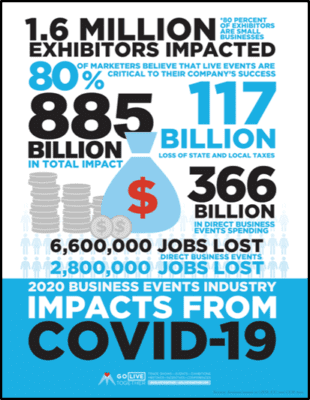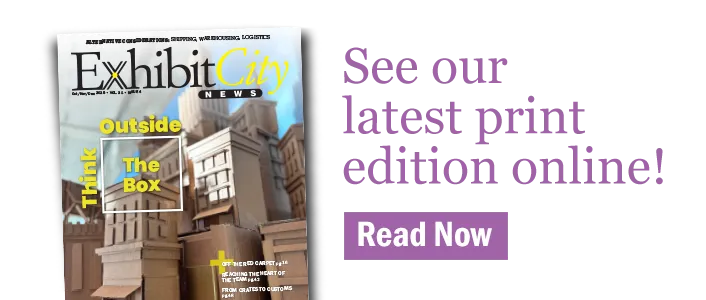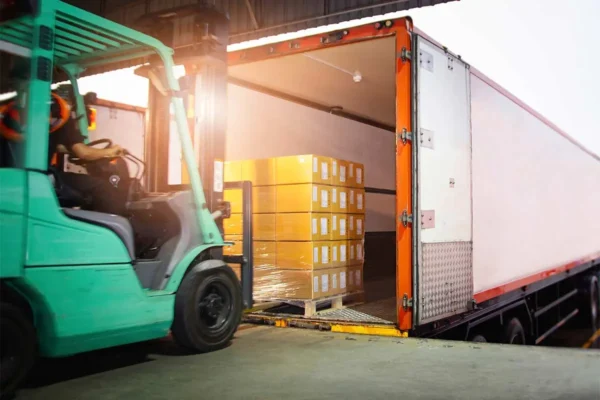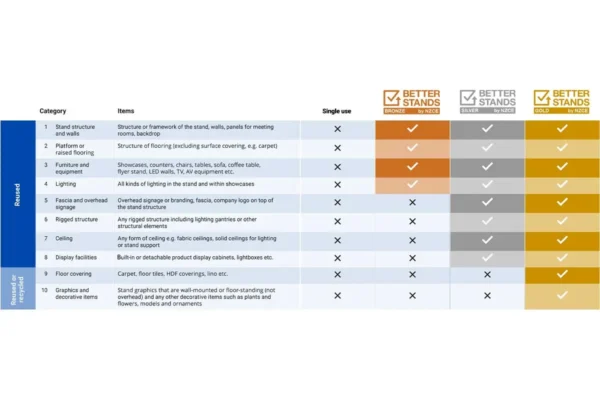Exhibit City News welcomes a new weekly column, The Tradeshow Times by Willwork’s Bob McGlincy, who promises to alternate between tradeshows today, tomorrow and yesterday.
“It’s very easy now to panic, and we cannot panic. Invest in your brands now, especially in these dry times. The easiest thing is to shut down, and that’s the worst thing.”— Joseph Tripoldi, CMO, Coca-Cola
by Bob McGlincy, director, business management, Willwork Global Event Services
2020
 Tradeshows are a unique three-dimensional environment, combining elements of marketing, advertising and sales. They stimulate the senses, excite the passions and engage and energize audiences. They bring targeted buyers and sellers together in one place, at one time and magically transform an empty convention center into a magnificent marketing extravaganza, a business carnival pulsating with energy and excitement. Tradeshows generate business and create millions of jobs.
Tradeshows are a unique three-dimensional environment, combining elements of marketing, advertising and sales. They stimulate the senses, excite the passions and engage and energize audiences. They bring targeted buyers and sellers together in one place, at one time and magically transform an empty convention center into a magnificent marketing extravaganza, a business carnival pulsating with energy and excitement. Tradeshows generate business and create millions of jobs.
At least they used to. COVID-19 changed that.
This pandemic has decimated the face-to-face industry. According to a CEIR study, “about 88 percent of events originally scheduled in the second quarter (of 2020) were cancelled.” The remaining ones either rescheduled, switched to a virtual platform or postponed to 2021.
Companies have laid off employees and downsized; in a few cases, some have closed their doors. Millions of people in the event industry have lost their jobs or been furloughed.
However, despite current conditions, this pandemic is not the end of live meetings and events.
Larger tradeshows have occurred in Asia and Europe, and smaller meetings have taken place in the U.S. Before looking at what the future may be like next year, let’s look back at last year.
2019
 In 2019, the meetings and events industry was thriving. Meetings were the place to network, to see and be seen, to promote the company brand, physically display product, gather leads and close new business.
In 2019, the meetings and events industry was thriving. Meetings were the place to network, to see and be seen, to promote the company brand, physically display product, gather leads and close new business.
The exhibition industry’s direct contribution to the U.S. Gross Domestic Product exceeded $101 billion; the total events industry contribution was more than $1 trillion. According to the U.S. Bureau of Economic Analysis, the contribution of the meetings industry to the GDP is larger than that of the plastics and rubber industries, and slightly smaller than the total contribution of the amusement, gaming and recreation industries.
The exhibition Industry supported more than two million jobs, and that number swelled to almost seven million jobs, when including travel and hospitably segments of the industry.
In 2019, the largest B2B show in the U.S. was the Consumer Electronics Show. It covered nearly three million square feet of exhibit space (2,930,421 to be exact), and attracted 4,550 exhibiting companies, and 107,148 attendees. MAGIC had more exhibitors, 4,697, and NAMM and SEMA registered more attendees (115,000 and 161,829, respectively).
Some people tend to view the world myopically, and see only the most recent activity: for example, a home sports team is only as good as their last win; or, a company’s profit this quarter is all that matters. Or a dismal present dictates the future. It does not.
A LOOK AHEAD TO 2021
Next year will be better than this year.
People enjoy face-to-face meetings, and the industry is too big to fail. Tradeshows are not mass gatherings; they can be controlled events, and are critical to local economies. Rapid COVID testing exists, and will become more prevalent and more accurate. Several vaccines are waiting on approval for distribution in the U.S. All of these reasons will propel live events to return sooner, as opposed to later.
Currently, in the fall of 2020, live shows are happening. Not a lot, but some, and it’s a start. The larger shows have been in Europe and Asia, while meetings in the U.S. have been smaller, and mostly local or regional events.
There will be changes in the tradeshow industry. In the past, changes have happened in the music industry, and in the newspaper industry. Changes are happening in film and banking, and starting to occur with hotels and airlines. Change is happening, and will continue to happen with meetings and events.
There will be fewer live shows in 2021 than there were in 2019, but significantly more than there were in 2020. Not all 2019 shows are guaranteed to return in 2021. A dying or uninteresting show will not be saved by going virtual, nor will it successfully return live, unless changes are made. Some shows in 2021 will be virtual, and others will be hybrid events. Companies will be looking for quality and value. And companies, before exhibiting at shows or sending employees to attend, will be asking more questions: Is it necessary? Is it essential? Is it worth it? Is the expense justifiable today? Those of us in the tradeshow industry will need to do an even better job providing answers, and creating value.
There will be fewer exhibitors at shows. But the companies that do exhibit will have greater opportunities, and a larger portion of the market share. Attendance at many shows, at least initially, will be less than before the pandemic; but it is not the quantity that matters as much as the quality. Some associations and show managers, due to current government mandates, have been limiting numbers and inviting a smaller, targeted audience of VIPs.
There likely will be fewer one-on-one client meetings (at least when flying is necessary). But this trend will increase the need and justification for attendance at trade shows, where one sees more people, and receives a better ROI.
Live shows will occur in the first quarter of 2021, and they will increase in size and number during the second quarter. Forgoing another economic shock, and assuming government restrictions are lessened, tradeshows will be somewhat back to normal in the third quarter, although attendance will be down. There will still be virtual shows, and most live shows will be hybrid events. Large international shows will be limited, and contingent upon vaccines, rapid testing (greater availability and improved accuracy), and a willingness for more people to travel by air.
2021 will be a time to reinvent, reimagine, and reexamine existing relationships. It will be a time to transform the future. We need to redesign exhibition models, and focus on people, safety, security and technology.
Bob McGlincy is director, business management at Willwork Global Event Services, based in Massachusetts. Willwork creates engaging, energized and exceptional event experiences. Contact him at Bob.McGlincy@willwork.com.























